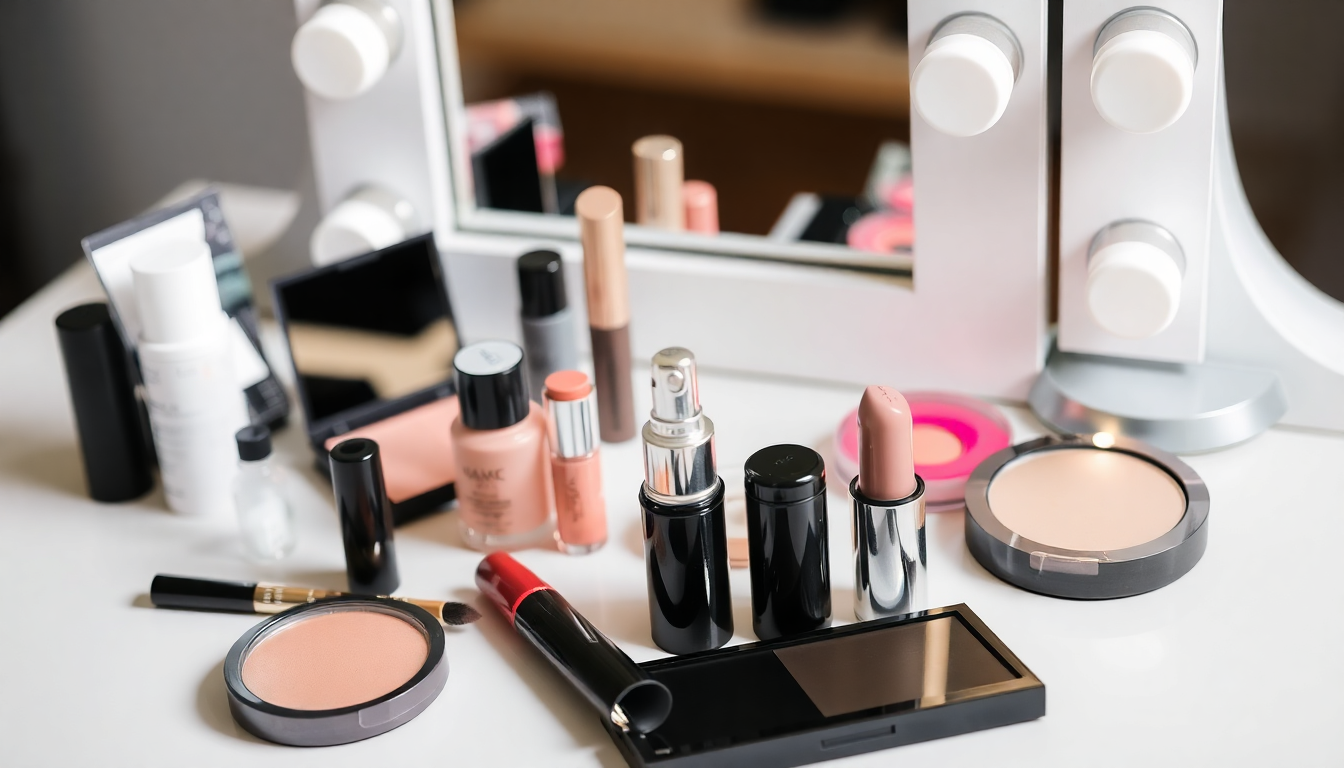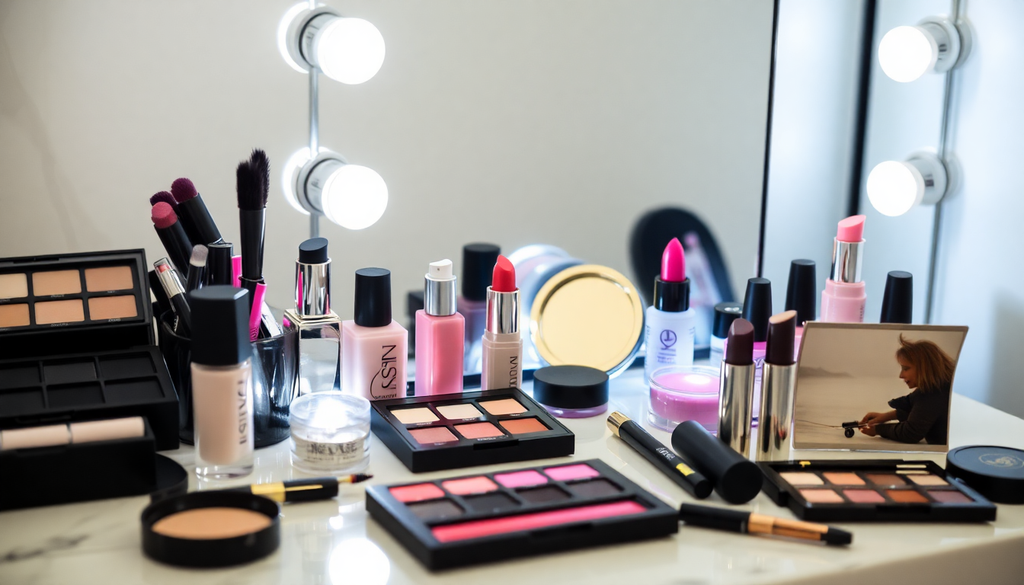
How to Launch Your Private Label Makeup Brand: Essential Steps for Success in the Cosmetic Industry Without Minimum Orders
Introduction
Starting your own private label makeup brand can be an exciting venture in today's beauty-centric world. With the growing demand for personalized and unique cosmetic products, it's the perfect time to step into the cosmetic industry. This comprehensive guide will walk you through the essential steps to successfully launch your brand without worrying about minimum order quantities, ensuring you have all the knowledge you need to thrive.
Understanding Private Labeling
Private labeling is a business model where you sell products manufactured by another company under your own brand name. This means you can focus on marketing and selling while the manufacturer handles production. Here are some advantages of private labeling:
- Reduced Overhead Costs: You won't need to invest heavily in manufacturing facilities or equipment.
- Faster Time to Market: You can quickly launch your products without the lengthy production timelines.
- Ability to Customize Products: You can create unique formulas and packaging that reflect your brand's identity.
- Less Risk with Inventory: With no minimum orders, you can test products before committing to larger quantities.
Steps to Launch Your Private Label Makeup Brand
1. Market Research
The first step in launching your makeup brand is understanding the market landscape. Conduct thorough market research to identify your target audience and analyze competitors. Consider the following:
- Trends in the Makeup Industry: Stay updated with current trends, such as clean beauty, eco-friendly packaging, and inclusivity in shade ranges.
- Consumer Preferences: What do consumers value in makeup products? Look for preferences in ingredients, packaging, and branding.
- Price Points: Analyze the pricing strategies of competitors to determine where your brand could fit within the market.
2. Choose Your Niche
Determining your niche is crucial for standing out in a saturated market. Focus on a specific segment of the makeup market you want to target. Possible niches include:
- Vegan Makeup: Products made without animal-derived ingredients appeal to a growing audience.
- Allergen-Free Products: Catering to individuals with allergies or skin sensitivities can fill an important gap.
- High-Performance Cosmetics: Products designed for long-lasting wear or specific purposes, such as sweat-proof or waterproof formulas.
- Luxury Makeup: High-end products that offer premium quality and branding can attract a discerning demographic.
3. Find a Manufacturer
Once you have a clear understanding of your market and niche, it's time to find a reputable manufacturer that offers private label services with no minimum order requirements. When choosing a manufacturer, consider the following factors:
- Quality of Products: Request samples to ensure the quality meets your standards.
- Production Capacity: Confirm that the manufacturer can meet your potential demand.
- Turnaround Time: Understand their production timeline to plan your launch accordingly.
- Certification and Compliance: Ensure the manufacturer adheres to industry regulations and quality standards.
4. Understand Cosmetic Regulations
Each country has its own regulations regarding cosmetics. Familiarize yourself with the labeling requirements and import policies in your target market. Key considerations include:
- Ingredient Safety and Compliance: Ensure all ingredients used in your products are approved and safe for consumer use.
- Labeling Guidelines: Understand what information needs to be included on product labels, such as ingredient lists, usage instructions, and warnings.
- Marketing Claims: Be cautious about claims you make regarding product performance to avoid legal issues.
5. Create Your Brand Identity
Your brand identity is crucial for standing out in the competitive cosmetic market. Focus on developing a cohesive brand that resonates with your target audience. Consider the following aspects:
- Brand Name and Logo: Choose a name that is catchy, memorable, and reflects your brand's mission and values. A professional logo can enhance brand recognition.
- Packaging Design: Invest in attractive and functional packaging that stands out on shelves and online. Packaging should be aligned with your brand identity.
- Brand Story and Values: Share your journey and what motivates you to create your makeup brand. Authenticity can build strong connections with consumers.
6. Set Up Your Online Store
In today's digital age, having an online presence is vital for reaching customers. Consider these platforms for setting up your store:
- Shopify: A user-friendly platform with customizable templates for e-commerce.
- WooCommerce: A flexible option for those familiar with WordPress, allowing for extensive customization.
- Etsy: Ideal for small businesses and handmade products, providing a built-in audience.
Ensure your website is user-friendly, mobile-responsive, and optimized for SEO. Include high-quality images, detailed product descriptions, and customer reviews to enhance credibility.
7. Develop a Marketing Strategy
Effective marketing will drive traffic to your store and generate sales. Consider the following strategies:
- Social Media Marketing: Utilize platforms like Instagram, TikTok, and Facebook to showcase your products and engage with your audience.
- Influencer Collaborations: Partner with beauty influencers to gain visibility and credibility within your target market.
- Email Marketing Campaigns: Build an email list to keep your audience informed about new products, promotions, and brand updates.
- Content Marketing: Create valuable content related to beauty tips, makeup tutorials, and product usage to attract and engage your audience.
8. Launch Your Brand
Once you have everything in place, it’s time to launch your makeup brand. Here are some tips for a successful launch:
- Host a Virtual Launch Event: Use platforms like Zoom or Instagram Live to introduce your brand and products to a wider audience.
- Offer Limited-Time Promotions: Create urgency with special discounts or bundles during the launch phase.
- Engage with Your Audience on Social Media: Encourage followers to share their experiences and tag your brand, creating buzz and excitement.
Post-Launch Strategies
Once your brand is launched, it's crucial to have a plan for sustaining momentum:
- Gather Customer Feedback: Encourage customers to provide reviews and testimonials to build trust and improve your products.
- Continuously Innovate: Stay updated with industry trends and consumer demands to introduce new products regularly.
- Expand Your Product Line: Consider adding complementary products, such as brushes or tools, to create a full makeup experience.
- Monitor Analytics: Use tools like Google Analytics to track your website's performance and adjust your marketing strategies based on data insights.
Conclusion
Launching a private label makeup brand without minimum orders is entirely feasible with the right approach. By following these essential steps, you can navigate the complexities of the cosmetic industry and set your brand up for success. Remember, consistency and passion are key to building a brand that resonates with consumers. With dedication and strategic planning, your private label makeup brand can become a standout player in the beauty market.




